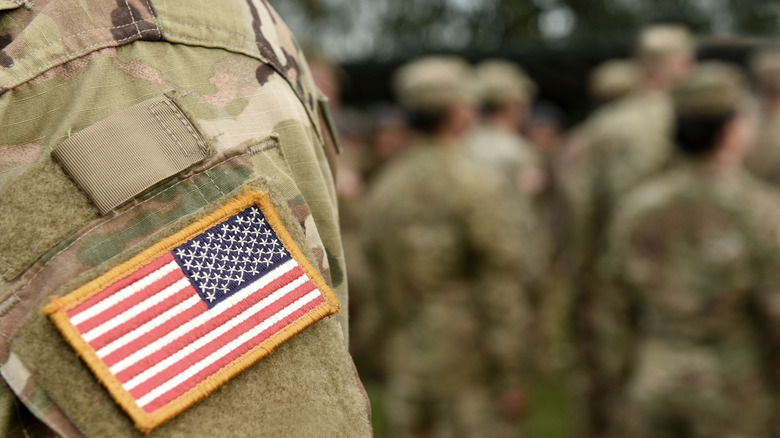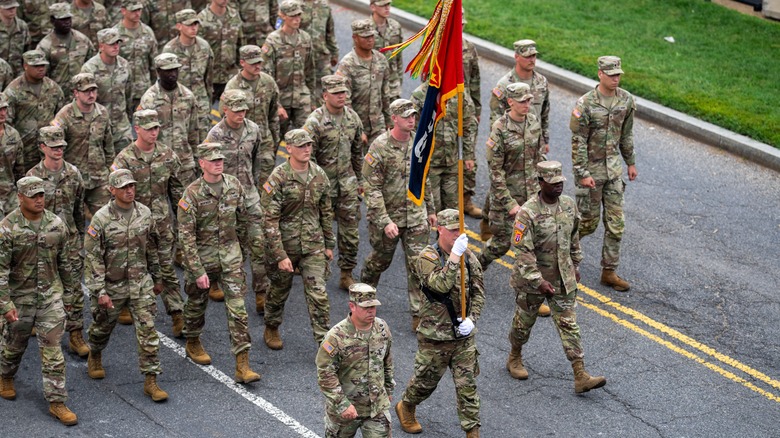The Military Has Issued New Army Uniform Standards - Here's What Has Changed
On September 15, 2025, the U.S. Army issued new directives for personal grooming and military uniforms, sometimes called "fatigues," after a full review of its policies. These new regulations tighten rules for both men and women. Leaders said the goal is to eliminate the ambiguity that surrounded the Army's 2021 uniform rules and to bring soldiers' appearances back in line with discipline and readiness.
For men, haircuts are no longer loosely defined as "neat" or "conservative." Instead, there are now clear limits: tapered or faded cuts with a maximum of 2 inches on top and 1 inch on the sides. Braids, locs, and twists are prohibited. Clean-shaven faces are required, though mustaches are allowed, and beard exemptions must go through medical or religious waivers that expire after review. Women face stricter limits on style and length, with ponytails capped at 6 inches from the collar and only allowed in combat and PT (physical training) uniforms. Bangs must rest above the eyebrows, and asymmetrical cuts are no longer permitted. Hair color for all soldiers must remain within natural shades.
Women are allowed only clear gloss or skin-toned lip products, conservative makeup to match their complexion, and have nails shorter than a quarter-inch. Men are not authorized to wear nail polish. Earrings remain limited to one small stud per earlobe for women, while men are still banned from wearing them.
Updated uniform standards and accessories
The uniform section of the directive clarifies wear of the Army Green Service Uniform (AGSU) and introduces detailed rules for its tropical version. By October 2027, all soldiers must transition into the AGSU, which can be worn in both Class A and Class B (tropical) configurations. The tropical Ike jacket has strict limits: No more than two rows of ribbons, one combat or skill badge, and precise placement of insignia. Enlisted soldiers will continue to wear rank on collars, while officers display pin-on insignia at the shoulder loops. Windbreakers are authorized without insignia if worn with civilian clothes.
Physical training uniforms also saw a change. Commanders can now allow runners' belts up to four inches wide for carrying phones or keys during PT. The move comes after soldiers were repeatedly spotted running with phones in hand, raising safety concerns. The belts, however, remain restricted to PT gear and cannot be worn with other uniforms. Belts are an essential phone accessory for running, so it makes sense that the Army has approved them for PT uniforms.
The intent behind the updates is consistency across the force, emphasizing that even small details, like ribbon rows or ponytail placement, matter for presenting a professional and unified image. These changes, coming soon after the 2021 rules, also add another set of details for movies to worry about, many of which don't seem to ever get military uniforms right in the first place.
Why the Army tightened standards now
The new grooming and uniform standards didn't emerge in isolation. They came from a panel of Army leaders and stakeholders tasked with reviewing appearance and body composition policies. Officials said there was broad agreement that standards had grown unclear and inconsistent, especially since the 2021 updates. The latest directive is meant to close those gaps.
In a press release, Sgt. Maj. of the Army Michael Weimer said professionalism is a defining trait of the service and that uniformity in grooming reflects the Army's values. "This definitive guidance gives leaders the tools they need to [enforce standards]. You don't have to memorize it, but you should know what right looks like." The messaging highlights the shift away from ambiguous descriptions toward precise measurements and definitions. By putting the rules in writing instead of relying heavily on photos or examples, the Army hopes leaders at all levels can apply them consistently.
The tightening of grooming standards also follows changes in the Army's fitness program. In early September, 2025, the service removed body fat composition reviews for soldiers who score high on the Army Combat Fitness Test. Combined, the moves reflect an effort to emphasize performance while also preserving a professional, disciplined image. The Army framed it as a balance: more flexibility for proven fitness, but stricter enforcement of outward appearance. Soldiers have until mid-October 2025 to comply, after which commanders are expected to enforce the rules across the Regular Army, National Guard, and Army Reserve.


